If your dachshund’s looking a bit rounder than usual, you’re probably worried about their health and happiness. 🐾 Helping your dachshund reach and keep a healthy weight is one of the best things you can do for their quality of life. 🧡 Dogs at a good weight just move easier, have more pep, and dodge a lot of those dreaded health problems that can sneak up on them. ⚖️
Knowing what your dachshund should weigh or how to help them shed pounds safely isn’t always obvious. 🤔 Here, you’ll find tips for spotting extra weight, picking the right food, and building an exercise plan that actually fits real life. 🥦🏃♂️
Key Takeaways 📌
- How to spot if your dachshund is overweight. 🐶
- Steps for safe weight loss and exercise. 🏋️
- When it’s time for a vet visit. 🩺
🐾 Free Dachshund Care Guide
Download our free checklist to ensure your Dachshund stays happy, healthy, and well-loved!
Get Your Free Guide 🐶Recognizing an Overweight Dachshund

Extra weight strains your Dachshund’s back, joints, and heart. Catching the signs early makes a big difference for your dog’s comfort. 🐾
Signs of Excess Weight 🐶
If your Dachshund’s heavier than they should be, you’ll probably notice a few things. Maybe they lag behind on walks, struggle with stairs, or get winded after just a little play. 🪜
Check their shape. A healthy Dachshund has a waist behind the ribs. If you can’t see a waist, or it’s just gone, that’s a red flag. 🚩
Other clues: the collar’s tight, there’s extra padding around the neck, or their belly sags. If you press on their ribcage and can’t feel ribs without digging, that’s another sign there’s too much fat. 🩺

🥦 ChefPaw Fresh Food Maker – Real Food for Real Weight Loss
Ditch the mystery kibble. This all-in-one fresh food maker gives you total control over what your Dachshund eats—helping you manage calories and nutrition while keeping mealtime exciting.
- ✅ Customize portions to avoid overfeeding
- ✅ Ideal for weight loss and sensitive stomachs
- ✅ Saves money on store-bought “weight loss” foods
Dachshund Body Condition Assessment 📊
Vets use a 1–9 scale to check body shape. Most Dachshunds do best with a score of 4 or 5.
You should be able to feel ribs but not see them. Their belly should tuck up when you look from the side, and the waist should show from above.
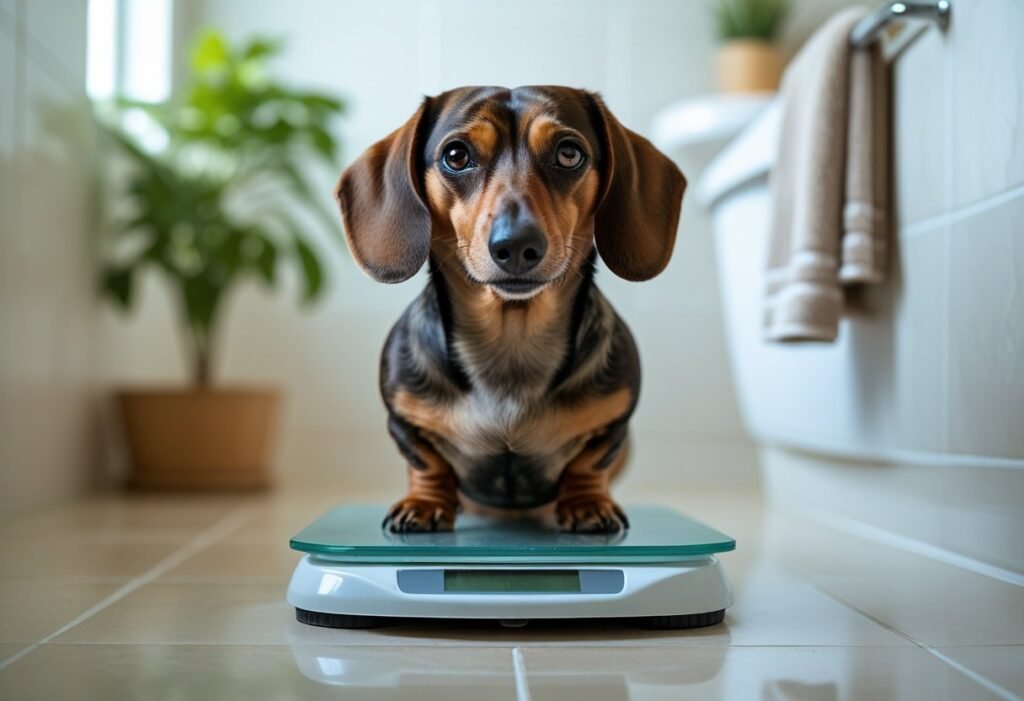
Quick table for reference:
| Body Area | Healthy Weight | Overweight |
|---|---|---|
| Ribs | Easily felt | Hard to feel |
| Waist | Visible behind ribs | Not visible |
| Belly Tuck | Noticeable | Flat or rounded |
If you’re not sure, have your vet check their body condition at the next visit. 🏥
Common Causes of Weight Gain 🍽️
Most Dachshunds get overweight because they eat more than they burn. Too many treats, table scraps, or big meals are usually the culprit. 🍪
Skipping walks or playtime doesn’t help either. Dachshunds need daily activity, even as they age. 🎾
Some medical issues, like hypothyroidism, can cause weight gain, but it’s not as common. Older dogs burn fewer calories, so they can gain weight eating the same food as before. 🧬
Not measuring food or sneaking them human snacks adds up fast. Using a scale and sticking to set meal times really helps keep things in check. ⏱️
Determining a Healthy Weight for Dachshunds
Keeping your Dachshund at a healthy weight helps them avoid back pain, diabetes, and joint trouble. You can track their weight by the numbers, but also by their shape and energy. ⚖️
Ideal Weight Ranges by Age and Size 📏
Most standard Dachshunds should land between 16–32 pounds. Miniatures are usually in the 8–11 pound range. These are for adults—puppies will obviously weigh less. 🐕
Here’s a quick table for healthy adult weights:
| Size | Weight Range |
|---|---|
| Miniature | 8–11 lbs |
| Standard | 16–32 lbs |
You should feel ribs but not see them. Look down from above—your Dachshund should have a waist. If you can’t find one or the ribs are buried, they’re likely overweight. 🩻
But every dog’s different. Age, build, and how active they are all play a part in what’s healthy for your Dachshund. 🐾

🌱 Wild Earth Dog Food – Lean, Clean, and Plant-Based
Packed with plant-based protein and free from junk fillers, this vet-developed formula supports healthy weight and digestion—perfect for chubby Dachshunds trying to slim down safely.
- ✅ 100% plant-powered and cruelty-free
- ✅ High protein, low-calorie formulation
- ✅ Great taste that dogs love (without guilt)
When to Consult a Veterinarian 🏥
If your Dachshund’s putting on weight or moving less, it’s time to talk to your vet. 🐶
Watch for trouble walking, breathing issues, or not wanting to do their usual stuff. These can mean extra weight—or something else going on. ❗
Your vet can check their body condition score (BCS) and help with a diet or exercise plan if needed. Regular checkups go a long way toward keeping your Dachshund happy and active. 🧑⚕️
Risks of Obesity in Dachshunds
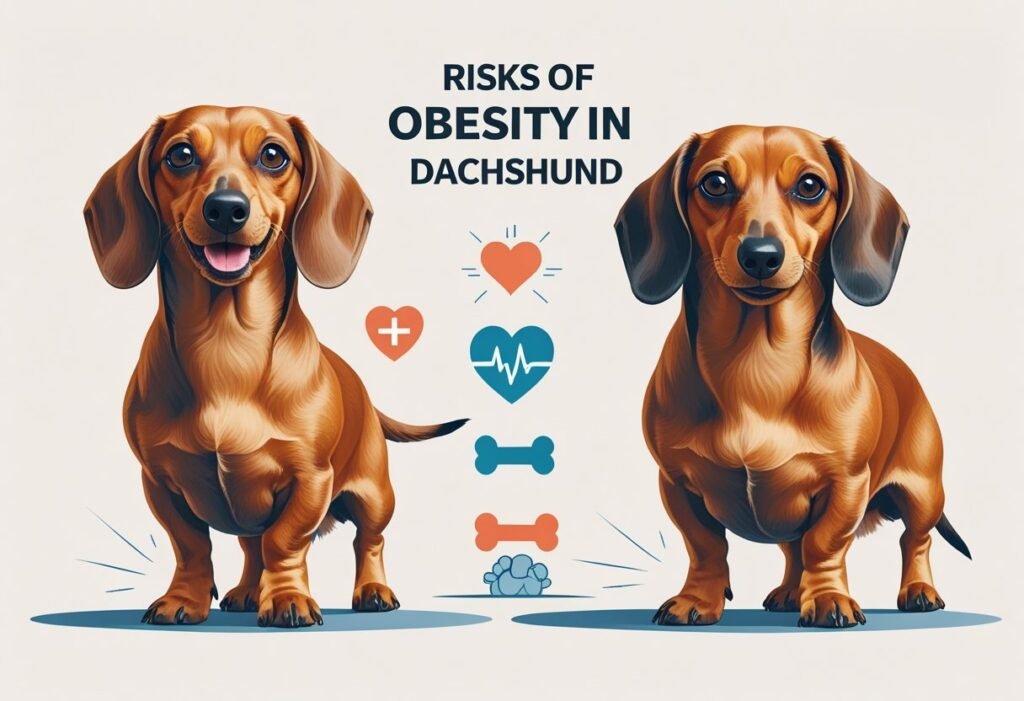
🎉 Grab your free Dachshund care checklist!
Extra weight can really mess with your Dachshund’s health. It puts stress on their bones, joints, and especially their back—making it tough to move and sometimes causing pain. 🦴
Health Problems Linked to Overweight Dachshunds ⚠️
When Dachshunds get overweight, they’re more likely to develop diabetes, heart issues, and liver trouble. Heavier dogs often have breathing problems and high blood pressure. Their lifespan can even get shorter. 🕒
Obesity weakens their immune system, so your pup might get sick more or take longer to heal up from something minor. 🧬
Common Health Risks:
| Condition | How It Affects Your Dachshund |
|---|---|
| Diabetes | Blood sugar problems, more vet visits |
| Heart disease | Tiredness, coughing, shorter life |
| Liver issues | Trouble processing food and medicine |
| Breathing issues | Less energy, trouble exercising |
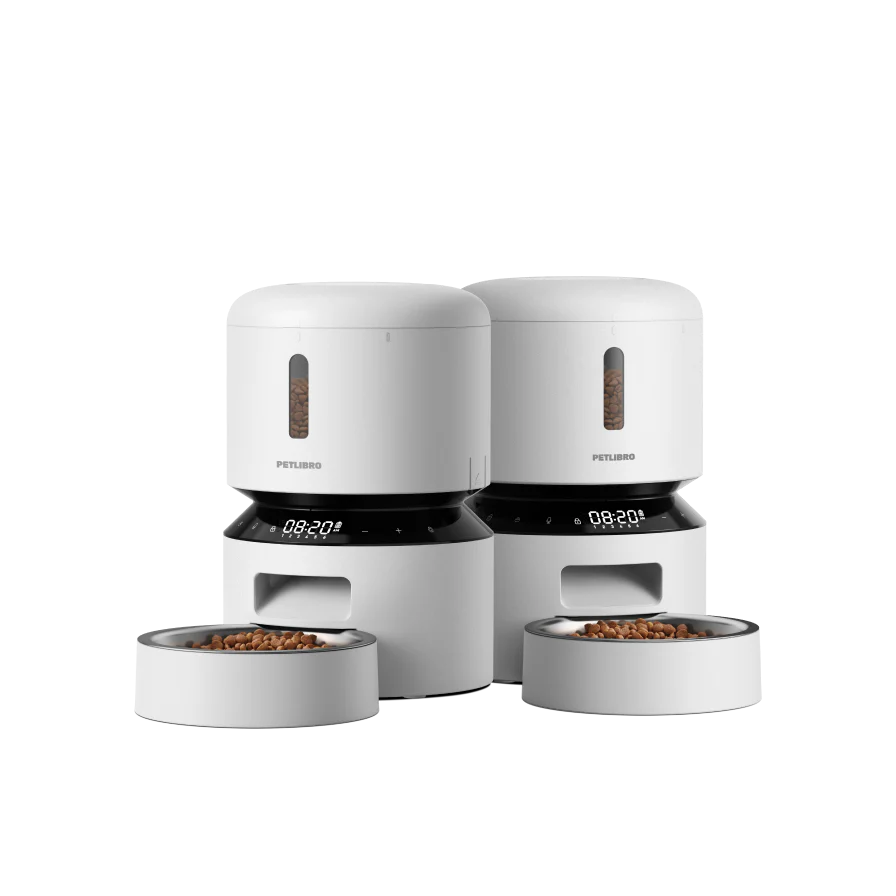
📏 Petlibro Smart Feeder
- ✅ Precisely controls meal portions to prevent overeating
- ✅ Schedule feedings to avoid begging or late-night snacking
- ✅ Helps establish a steady, weight-friendly routine
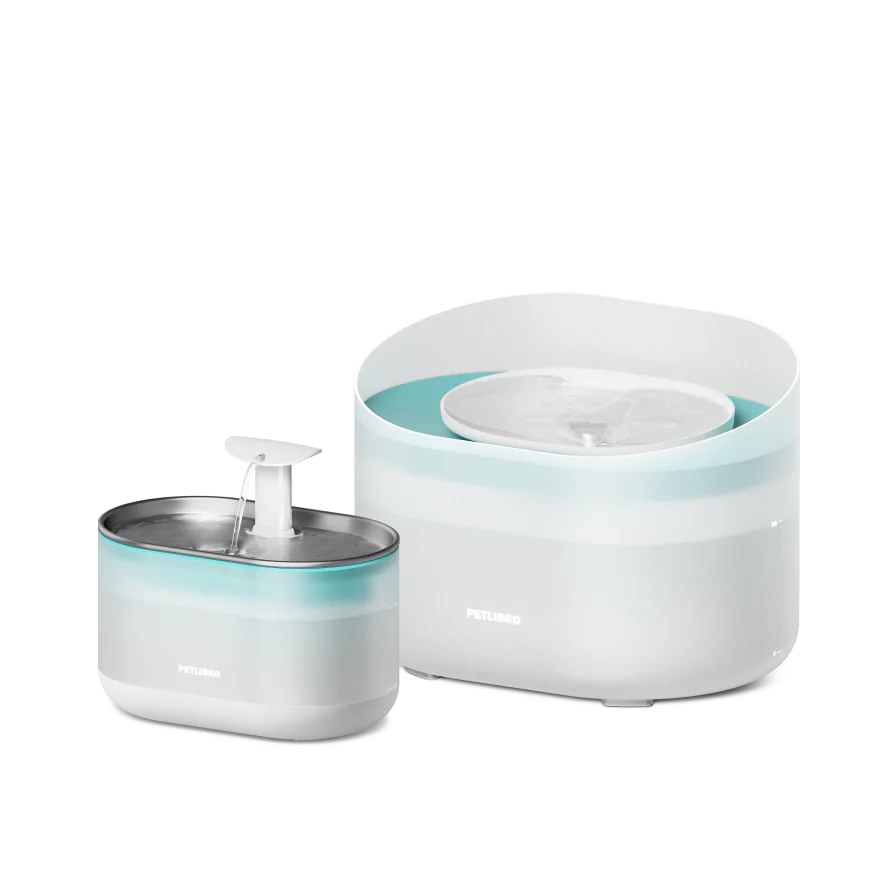
💧 Petlibro Water Fountain
- ✅ Encourages frequent hydration, key for metabolism
- ✅ Filtered water supports overall wellness & digestion
- ✅ Keeps your Doxie’s weight loss on track, one sip at a time
Mobility and Joint Concerns 🐾
Dachshunds already face more back problems than most breeds—even at a healthy weight. Add extra pounds, and the risk of spinal injuries like slipped or herniated discs (IVDD) goes way up. That can mean pain, even paralysis, and sometimes expensive surgery. 🛌
All that weight puts pressure on their short legs and long backs. Over time, this can lead to joint pain or arthritis. You might notice your dog moving less, avoiding stairs, or skipping playtime. 🐕
If you notice changes in how your Dachshund walks, jumps, or gets up after resting, check with your vet. Catching issues early can help avoid bigger problems. 🩺
Creating a Dachshund Weight Loss Diet Plan
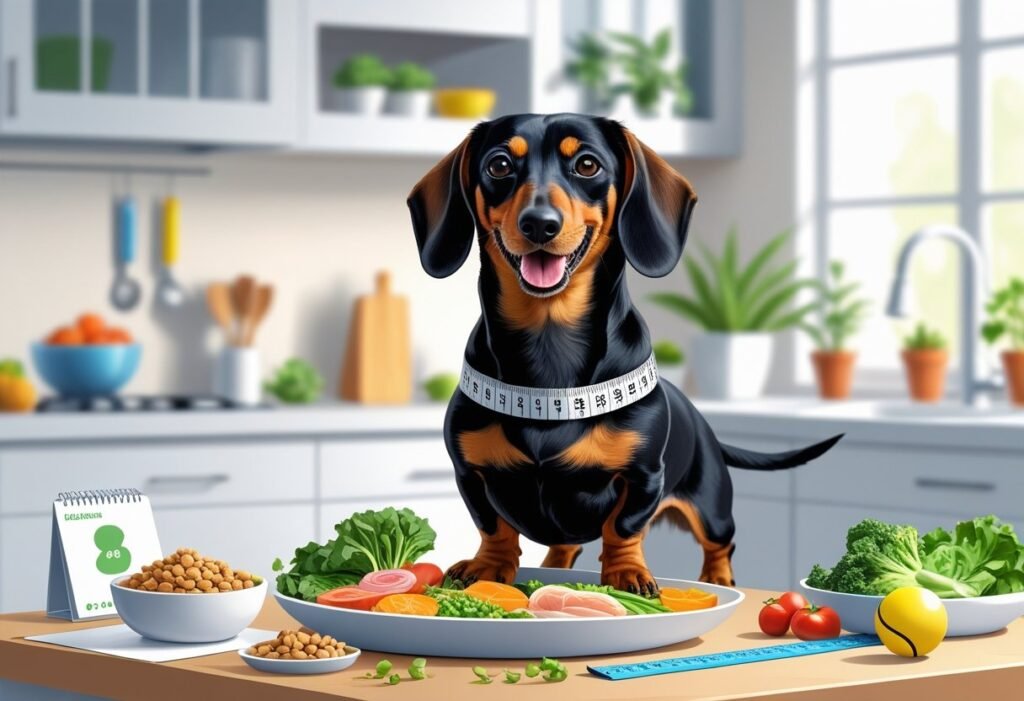
Helping your Dachshund lose weight means picking the right food and sticking to good habits. Paying attention to what and how much they eat really makes a difference. 🐾
Nutritional Requirements for Dachshunds 🍽️
Dachshunds need a balanced diet with protein, fiber, and healthy fats to lose weight safely. Protein keeps muscle while they lose fat. Fiber helps them feel full without piling on calories. Chicken, turkey, or fish work well for protein.
Skip foods loaded with fillers like corn or soy, and avoid artificial flavors. Too many carbs add pounds fast. Start with the feeding guidelines on the bag, but tweak as your vet suggests. 🥣
Dogs slimming down usually need fewer calories per day. For most Dachshunds, 25–30 calories per pound is a safe place to start, but your vet can give you a number that fits your dog. 📏

🩺 The Swiftest Pet Insurance
- ✅ Covers health checks, weight-related conditions, and treatments
- ✅ Fast claims so your Doxie gets care without delay
- ✅ Ideal protection for overweight Dachshunds managing joint stress

🛏️ Majestic Pet Orthopedic Bed
- ✅ Provides joint and back support for heavier Doxies
- ✅ Helps relieve pressure on hips, knees, and spine
- ✅ Washable cover keeps it fresh and allergen-free
Choosing the Best Dog Food 🛒
Go for a low-calorie, high-protein dog food made for weight loss. Most brands have “weight control” or “healthy weight” formulas. They cut the fat but keep the nutrients.
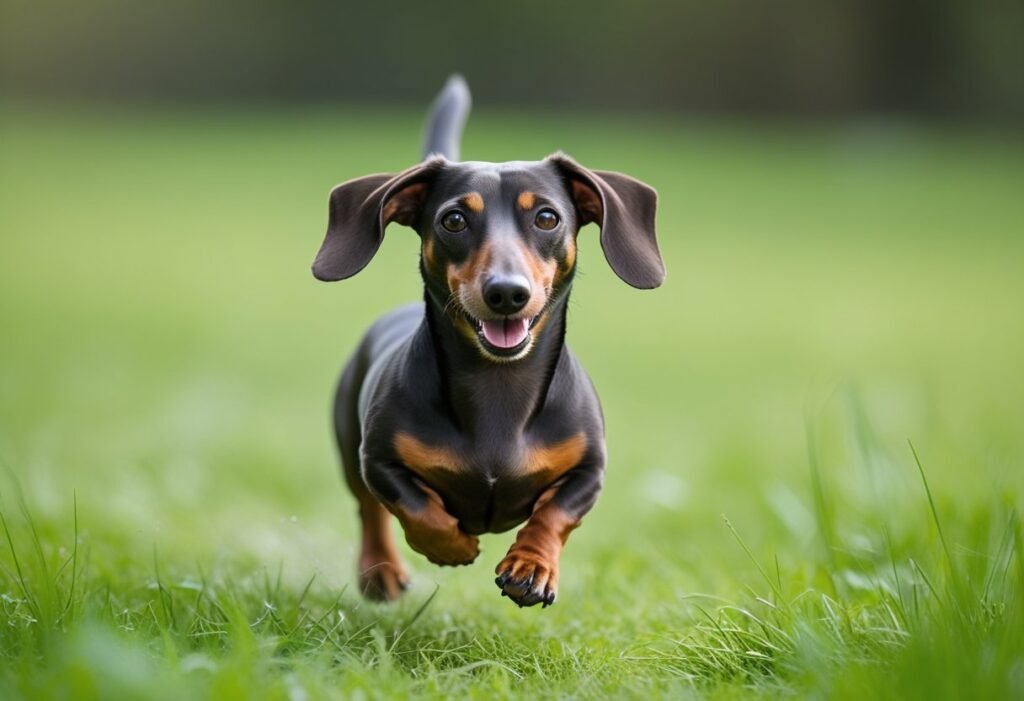
Check the label—the first ingredient should be a real animal protein like chicken or salmon. Steer clear of by-products and heavy grains. Some folks make homemade meals, but you’ll want to talk to your vet or a nutritionist first. 👩⚕️
Wet food is easier to portion, but dry kibble helps with dental health. Always measure your dog’s food with a cup or scale—eyeballing it just doesn’t work. ⚖️
Establishing Feeding Schedules 🕒
Feed your Dachshund two or three small meals a day instead of one big one. It helps curb hunger and keeps begging down. Stick to set meal times and resist the urge to hand out treats or table scraps.
If treats are a must, use healthy options like baby carrots or green beans. Don’t let treats go over 10% of daily calories. Try keeping a food journal for a while—it’s surprisingly helpful for spotting where those sneaky extra calories come from. 🥕
Exercise Strategies for Dachshund Weight Loss
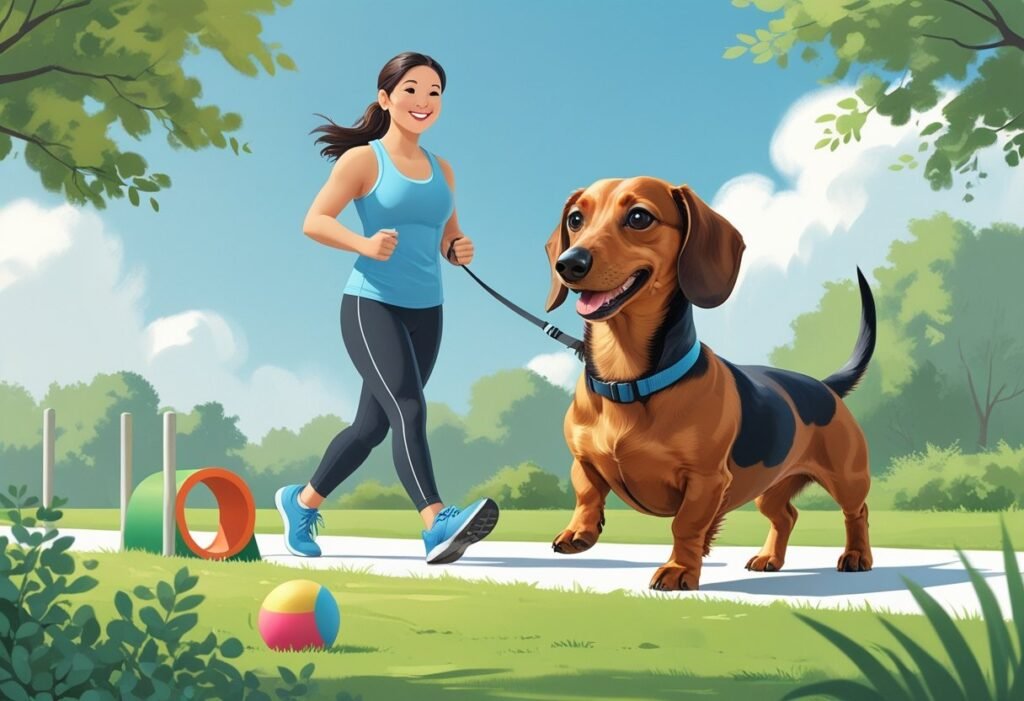
Exercise helps your dachshund burn calories, keeps their muscles working, and gives them something to focus on. It’s good for their joints, too. 🐕🦺
Safe Exercise Routines 🦴
Because of their long backs, dachshunds do best with gentle exercise that doesn’t strain their spine. Short, daily walks—maybe 15 to 30 minutes—are really all they need. Use a harness instead of a collar so there’s less pressure on their neck and back. 🚶♀️
Try to stick to flat ground. Don’t let your dachshund jump on and off furniture, climb stairs, or run around on slippery floors. Swimming is usually a safe option and easy on their joints, but always keep an eye on them in the water. Some dogs love it, but others might get nervous or tired quickly. 🏊
If your dachshund hasn’t exercised much before, take it slow. Watch for signs like limping or heavy breathing. If something feels off, check with your vet before pushing ahead. 👩⚕️

📷 Petcube Cam 360
- ✅ Keep an eye on eating habits and sneaky snacks
- ✅ Monitor activity levels throughout the day
- ✅ Talk to your Doxie when you’re away for gentle motivation
🛰️ Tractive GPS Tracker
- ✅ Track your dog’s daily walks and calories burned
- ✅ Set activity goals and monitor progress over time
- ✅ Keep your Dachshund safe while building healthier habits

Incorporating Play and Activities 🎾
Playtime keeps things interesting and gets your dachshund moving. Try toss-and-fetch with soft toys, a gentle tug-of-war, or even hiding treats for them to find. Change up the games now and then so your dog doesn’t get bored.
Enrichment activities like treat puzzles encourage your dachshund to move around the house. Hide small bits of healthy food in different rooms or use food-dispensing toys. Short, supervised play sessions a few times a day can really add up. 🍖
Social play with other gentle dogs works if your dachshund is calm and comfortable with it. Always supervise to make sure play doesn’t get too rough. Honestly, frequent short sessions beat one long, exhausting activity every time. 🐾
Supporting a Long, Happy Life for Your Dachshund

Healthy habits can help prevent weight gain and all the problems that come with it. Your daily choices, from how you feed to how much you play, really matter for your dachshund’s well-being. 🐾
🩺 Monitoring Progress and Weight Maintenance
Check in regularly on your dachshund’s weight. Weigh them at home or at the vet about once a month. Jot down their weight, body condition, and any changes in their mood or appetite. 📊
BCS Score Table:
| BCS Score | Description |
|---|---|
| 1–3 | Too thin: ribs and bones visible |
| 4–5 | Ideal: waist seen, ribs felt but not seen |
| 6–9 | Overweight: no waist, ribs hard to feel |
Adjust food and exercise based on these check-ins. If your dachshund keeps gaining weight, look at treats and portion sizes. Before making any big changes, get your vet’s advice. ⚖️
🌟 Weight-Friendly Essentials to Help Your Overweight Dachshund Thrive
- 💧 Petlibro Water Fountain — Encourage more drinking (helps metabolism and digestion) with a steady supply of fresh, filtered water to support weight-loss efforts.
- 🍪 Petcube Bites 2 — Use precise, measured treats as part of reward-based training to control calories while reinforcing good habits during weight-management exercises.
- 🪜 Majestic Pet Stairs — Reduce jumping and awkward movements that strain joints; gentle, controlled movement helps overweight Doxies exercise safely.
- 🧫 AnimalBiome Gut Health Test Kit — Check for digestive imbalances that can affect weight, appetite, and nutrient absorption — then follow personalized guidance to support healthy weight loss.
🧠 Behavioral Tips for Owners
Stick to regular routines for feeding, walks, and playtime. Try not to give table scraps or use food as the main reward. Toys, praise, and attention work great for positive reinforcement and don’t add calories. 🎾
If your dachshund begs for snacks, distract them with a game or a walk. Keep food out of reach and stick to a schedule so you don’t accidentally overfeed. Measured portions are your friend—free-feeding usually isn’t. 🐶
Keep track of how many treats you give each day. Swap out some food rewards for belly rubs or playtime. These small, steady habits make a real difference for weight control and a happier, more energetic dachshund. 🌟
When Professional Guidance Is Needed
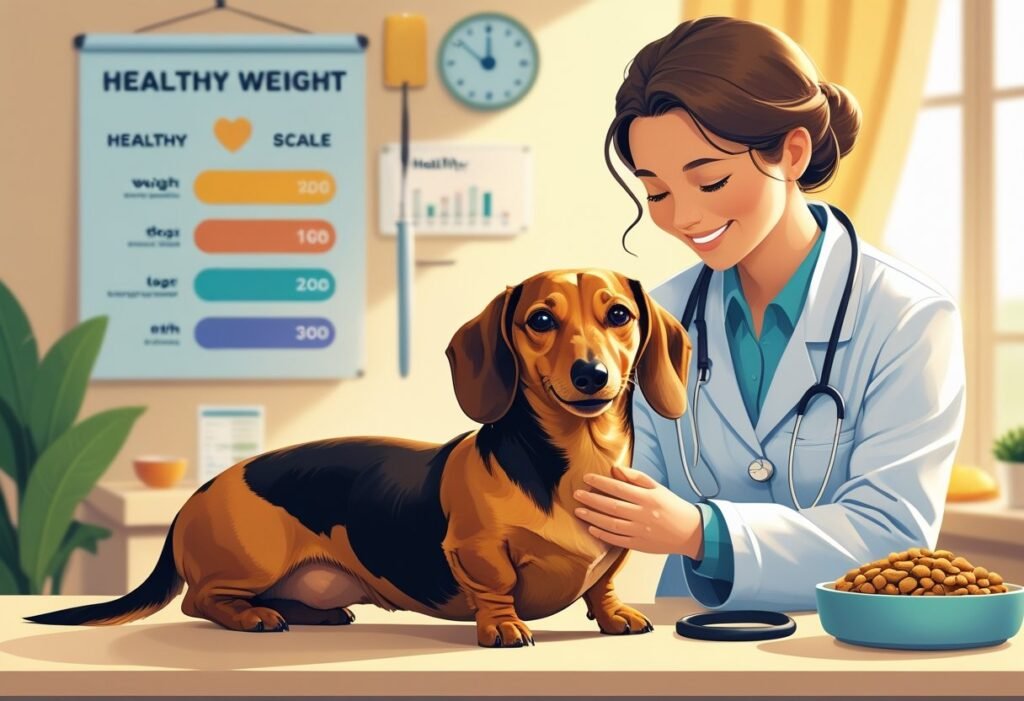
Sometimes you just need extra help to manage your dachshund’s weight. Getting advice from a professional can set you and your dog up with a safe, realistic plan. 🐶
🩺 Working With a Veterinarian or Pet Nutritionist
A veterinarian can do a full checkup to see if your dachshund’s weight is tied to something more than just overeating. They’ll check body condition, look for health issues, and suggest changes for exercise and diet.
If diet changes are needed, a pet nutritionist can build a meal plan for your dog. They’ll consider age, activity, and any medical needs to figure out what and how much to feed. This kind of support helps you avoid missing nutrients or making things worse by accident. 🍽️
When to seek expert help:
- Weight gain even after cutting back on food 🧪
- Difficulty walking or breathing 🐾
- Pain in the back or joints 🦴
- Sudden changes in appetite 🩻
💛 Weight & Wellness Essentials for a Healthier, Happier Dachshund 🐾
- 🎽 Embark Pet Adventure Harness – Support gentle, safe walks that promote weight loss without putting stress on your Doxie’s spine or joints.
- 🌿 Zumalka Calmpet Anxiety Relief Drops – Helps calm emotional eaters and reduces stress, promoting healthier routines and better rest.
- 🧴 King Klean Dog Shampoo – Keep your Doxie’s skin and coat healthy while they lose weight — gentle, hypoallergenic cleansing supports overall well-being.
- 🎨 Purr & Mutt Personalized Dachshund Art – Celebrate your Doxie’s weight-loss milestones with a beautiful custom portrait that captures their personality and progress.
- 👕 Dog is Good Apparel & Gifts – Show your pride in your Dachshund’s health journey with uplifting designs that inspire both comfort and joy.
🐶 Combine calmness, care, and daily movement to help your Doxie maintain a healthy weight and a happier, more active lifestyle.
💊 Medical Interventions
Some dachshunds gain weight because of medical problems like an underactive thyroid. A vet can run tests and recommend treatments if needed.
If your dog needs medication for a hormone or metabolic issue, don’t try to handle it yourself. Only a vet should prescribe these. Rarely, surgery or other procedures might be needed for things like herniated discs caused by extra weight.
Stay in touch with your vet to make sure treatment works and adjust the plan as things change. If you notice new symptoms, let them know right away—don’t wait it out. 🕒
🐾 Don’t Miss Out!
Download our free Dachshund care guide to keep your furry friend happy and healthy.
Get Your Free Guide 🐶Frequently Asked Questions
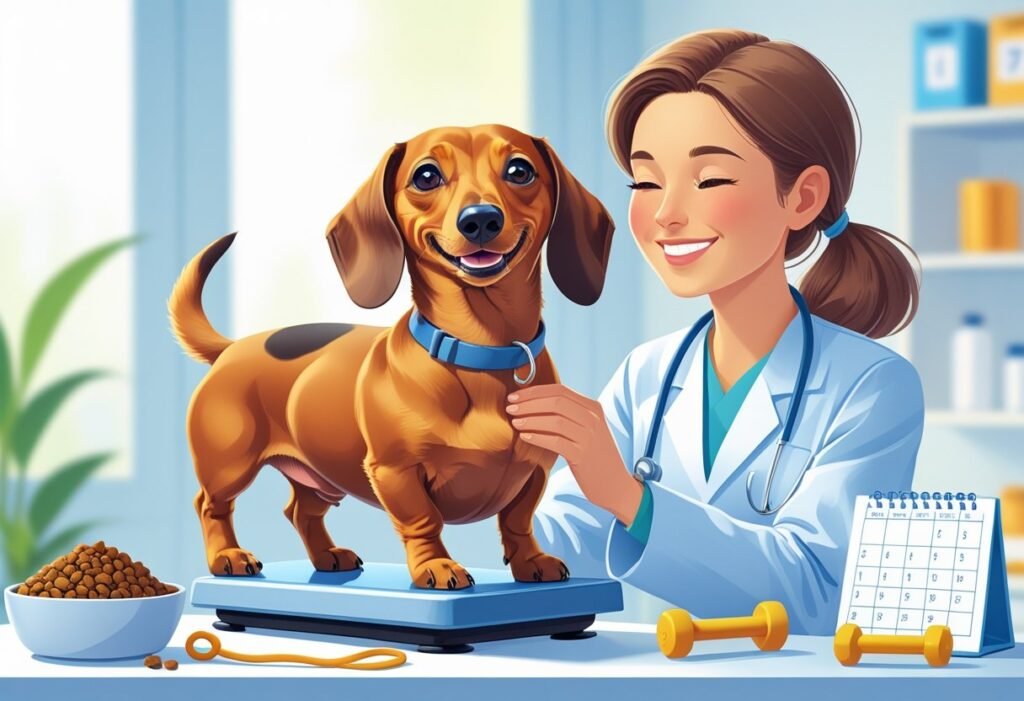
Keeping your dachshund at a healthy weight really matters for their comfort and health. A few small changes each day can help your dog stay active and feel good. 🐾
🐶 What is the ideal weight for a standard Dachshund?
Standard Dachshunds usually weigh between 16 and 32 pounds. Most healthy adults are right around 23 pounds, give or take. ⚖️
👀 How can I determine if my Dachshund is overweight?
If you can’t feel your dog’s ribs without pushing, or you don’t see a waist from above, there’s probably extra weight. Fat at the base of the tail or along the back are also signs. 📏
❤️🩹 What are the health risks associated with Dachshunds being overweight?
Extra weight can lead to back issues, joint pain, diabetes, and heart disease. Overweight Dachshunds are more likely to develop intervertebral disc disease (IVDD), which is serious stuff. 🛑
🏃♂️ What steps should I take to help my overweight Dachshund lose weight?
Start with a vet visit to rule out health problems. Switch to measured meals, cut back on treats, and add in short walks and gentle play to burn calories. 🥕🎾
🍽️ How can I adjust my Dachshund’s diet to achieve a healthy weight?
Pick a lower-calorie, balanced diet. Offer veggies as snacks and cut out fatty treats. Always measure portions and feed what your vet recommends. It’s not fancy, but it works. 🥦
📋 Can you provide a weight management plan for a Dachshund?
Give your Dachshund two or three small meals daily, and stick to a measuring cup so you know exactly how much they’re getting. Try to add more activity—maybe a couple of short walks or some playtime each day. Weigh your pup at home or during vet visits about once a month, just to see how things are going and tweak the plan if it seems off. 🐾🕒
🦴 How often should I walk my overweight Dachshund?
Start with one or two short walks daily—around 15–20 minutes each. Gradually increase time as your pup builds stamina. Always use a harness, not a collar, to protect their neck and back. 🐾
Stick to flat, non-slippery surfaces to avoid strain on their joints and spine. 🌿
🥗 Are there healthy treat options for weight loss in Dachshunds?
Yes! Try raw baby carrots, green beans, or small apple slices (no seeds). These low-cal snacks help curb begging without adding unnecessary calories. Just be sure treats stay under 10% of their daily intake. 🍎



